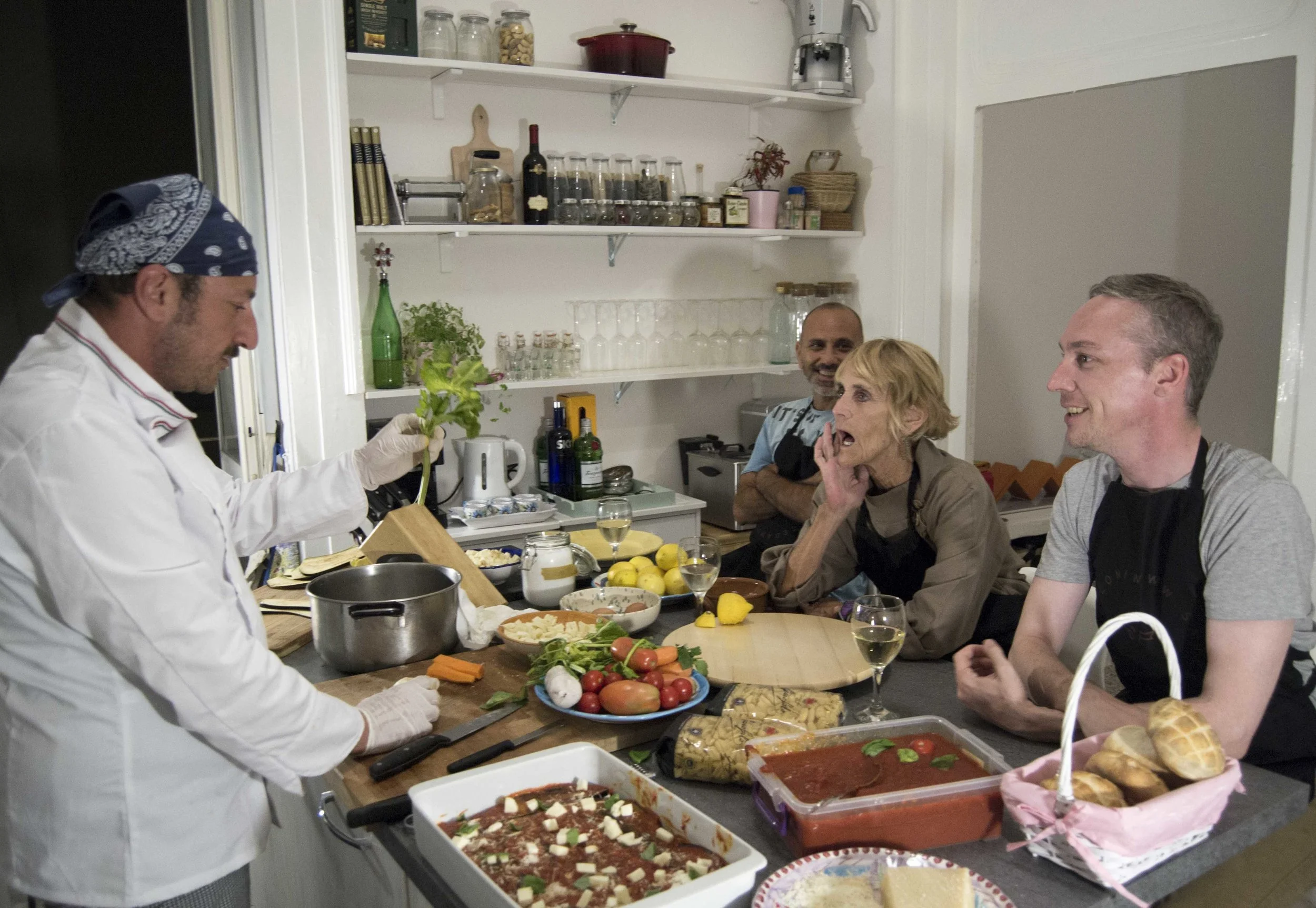A Guide to Campania White Wines
I enjoy both the pleasure and responsibility of introducing foreign guests to the wines of Campania. While it is true that many just want to get blotto on vacation (and who can blame them for coming to us—we call ourselves Sauced & Found after all)—it is equally the case that many of you want a fully immersive Campania wine experience. This is where the fun begins. Campania, thanks to its wildly varied topography and volcanic soil is the most biodiverse region in Italy. The same soil that gives the world the spectacular San Marzano tomato and squeaky buffalo mozzarella, also produces some of our most stimulating wines.
Drinking Campania whites offers a real opportunity to learn your terroir and why it matters. Rarely over oaked, these grapes are often a micro-regional expression of their native terroirs. A Falagnhina from the hard-scrabble Seussianpergolas of the Amalfi Coast will differ vastly from the more genteel version hailing from the rolling hills of provincial Benevento, only 100 kilometers inland. Each grape tells a story glass by glass.
That story intersects tales of volcanic explosions, foreign conquests, peasant revolts, world wars, plagues and bacchanalian rites of passage. When really lucky, you encounter a family that has lived inter-generationally for centuries to ensure that particular heirloom varietal is in your glass on a balmy September afternoon as you gaze at one of our region’s volcanoes, cliffs, islands or pastoral panoramas. That is Campania wine. A lesson in geology and geopolitics all in one humble glass, beckoning you to drink as Osci, Samnite, Greeks, Romans, Normans, Aragonese and Bourbons have here for millennia. Below is a list of Campania’s principal white wine grape varietals. It is by no means exhaustive. Merely a portrait to get you started and sauced.
Asprinio
What a funny little grape this is. Traditionally, the vines are trained on poles and grow over 50 feet into the air. To harvest, locals must climb ladders. The name Asprinio meaning tart, is a nod the grape’s crisp acidity. Often slightly effervescent, it is fun to drink and low in alcohol (10%).
Pair: Enjoy with platter of local charcuterie or a caprese salad.
Best Labels: Vittematta, I Borboni, Salvatore Martusciello
Bioncolella
The vinicultural jewel of the island of Ischia, Biancolella is an ancient grape hailing from the Euboean provinces of Greece. Bourbon rulers of the Kingdom of Two Sicilies would later bring the varietal to the Amalfi Coast and the island of Ponza. The green tuff on the slopes of the dormant volcano Epomeo on Ischia is where Biancolella was born and continues to shine in Italy. A citric, clean wine that seduces with its jocular vitality, it pairs perfectly with local seafood.
Pair: Spaghetti and Clams, Seafood Risotto, Acqua Pazza Style Branzino
Best Labels: Casa D’Ambra, Tommasone
“ “In Campania the vines espouse the poplars and, embracing their brides and climbing with wanton arms in a series of knots among their branches, rise level with their tops, soaring aloft to such a height that a hired picker expressly stipulates in his contract for the cost of a funeral and a grave!””
Catalanesca
King Alfonso of Aragon brought this rare grape from Catalonia to Campania in 1450 when his court ruled the Kingdom of Two Sicilies. It continues to thrive on the slopes of Mount Soma and her sister Vesuvius. A precious golden grape, it is exclusively cultivated by small family business. Enjoying a late harvest, Catalanesca boast notes of apricot and ginestra florals.
Pair: Fresh Mozzarella and Fior di Latte Cheese, White Pizza, Lemon Leaves and Melted Provolone
Best Labels: La Cantina del Vulcano,Cantine Olivella
Coda di Volpe
Meaning foxtail, Coda di Volpe form tight pendulous bunches on the vine that resemble a bushy foxtail. The varietal, also known as Falerno, thrives in Irpinia and on the slopes of Vesuvius. Previously used as a mixing grape to soften the mineral forward Fiano, Greco di Tufo and Falanghina wines, today it is possible to find single grape Coda di Volpes. If you find one, do yourself a favor and buy. Seductively smoky yet citrusy, this is a wine for the jaded connoisseur who thinks he/she has seen and drunk it all.
Pair: Grilled Prawns, Stuffed Squid, Cacio e Pepe, Impepata di Cozze (Peppered Mussels)
Best Labels: Tenuta Cavalier Pepe, Fattoria La Rivolta
Falanghina
Likely the most famous regional white wine outside of Campania, Falanghina arrived on the shores surrounding the Bay of Naples roughly 2,800 years ago with settlers from Thessaly in ancient Greece. Named for the Greek word falango, referring to the stake used to train the grape, Falanghina went through a reputation decline in the post WWII years due to unscrupulous vintners. She is now back with a vengeance thanks to the dedication of many small batch family run vineyards across Campania. If you want to really geek (and Greek!) out over terroir—this is your grape. Grown all over Campania, no two Falanghinas are quite the same. Campi Flegrei varietals are assertively mineral forward due to the compacted yellow tuff soil there. Benevento Falanghina is sturdier and fruitier.
Pair: Mussels, Mixed Fried Fish
Best Labels: La Sibilla, CautieroTerra di Briganti, Cantina Astroni
Fiano
Fiano has thrived in the hills of Avellino since ancient Roman times. It was once called Apianum for the bees the grape attracted. The small tough-skinned grapes are generally low yield so for many years it experienced a market decline. Today, the varietal has enjoyed a surge in interest and the Italian government protects this micro regional heritage grape with a DOCG designation. A full bodied, honey forward wine, Fianos ages beautifully.
Pair: Grilled Mackerel or other oily fish; Charred Octopus
Best Labels: Feudi di San Gregorio Pietracalda, Ciro Picariello, Tenuta Sarno
Greco di Tufo
An old-world Campania wine at its best, Greco di Tufo is named for the volcanic tuff that dominates the earth in which it thrives. The best Greco di Tufo grapes grow in Avellino, where nearly three thousand years ago ancient Greeks from Thessaly planted the first vines. Even the name Greco harks to the distinctly Greek vinicultural influence on this part of Italy. Here is a hearty sulfur rich soil that protected the vines against 19thPhylloxera outbreak (only the grapes of volcanic Stromboli enjoyed the same immunities). Mineral, citric and memorable, Greco di Tufo is sublime in the autumn with a white pizza of foraged porcini mushrooms.
Pair: Porcini Risotto, Butter Poached Scallops, Brandade de Morue
““Sacred and ancient wine has the mysterious color of hellfire, the taste of lava, lapilli, ash that buried Herculaneum and Pompeii”
”
Lacryma Christi
The wine of legends, Lacryma Christi is so named for the tears Christ shed when he descended from the heavens to gaze upon the territory of his fallen brother Lucifer, only to discover the land surrounding the slopes of Vesuvius (one of the ancient entrance’s to hell) was drop dead gorgeous. From the trail of Christ’s tears spontaneously grew these precious vines. To this day, vintners on the slopes of Vesuvius blend Verdeca and Coda di Volpe grapes, with smaller proportions of Falanghina, Caprettone and Greco di Tufo to create a uniquely mineral forward volcanic wine.
Pair: Anchovies Gratin, Grilled Sword Fish
Best Labels: Cantina del Vesuvio, Casa Setaro,
Pallagrello Bianco
The grape of kings, Pallagrello Bianco was famously cultivated in the Vigna del Ventaglio vineyard at the Royal Palace of Caserta for King Ferdinand I. After a Phylloxera epidemic and two World Wars, Pallagrello nearly disappeared but several dedicated local vintners rescued the royal grape from extinction. Originally made as a straw wine, Pallagrello derives its name from the Italian wordpagliarello, the straw mat that Pallagrello bianco grapes were dried on after harvest. The varietal dominated the royal silk producing area of San Leucio and to this day can be found almost exclusively in the province of Caserta near the old royal palace. Seldom aged in oak, Palagrello Bianco wines are moderately acidic with notes of stone fruit.
Pair: Fresh goats’ cheeses and fig chutneys, Puttanesca, Octopus Salad (And dare I say I drink this with sashimi!)
Labels: Alois, Nanni Copé, Sclavia







